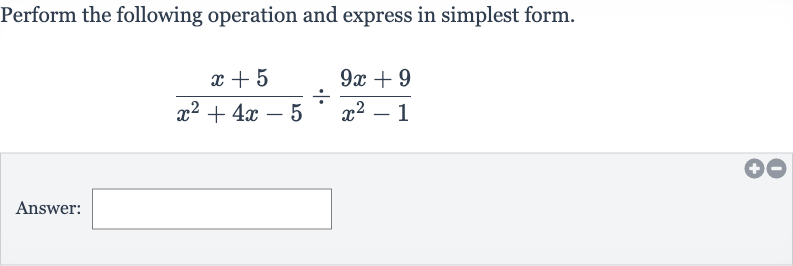Full solution
Q. Perform the following operation and express in simplest form.Answer:
- Factor Denominators: First, we need to factor the denominators of both fractions to simplify the expression.The denominator of the first fraction is , which factors into .The denominator of the second fraction is , which is a difference of squares and factors into .
- Rewrite as Multiplication: Next, we will rewrite the division of the two fractions as a multiplication by the reciprocal of the second fraction. becomes .
- Simplify by Canceling: Now, we can simplify the expression by canceling out common factors.The in the numerator of the first fraction cancels with the in its denominator.The in the numerator of the second fraction is , and the in its denominator can be factored as .
- Final Simplified Expression: After canceling the common factors, we are left with:.The in the numerator and denominator cancel each other out.
- Final Simplified Expression: After canceling the common factors, we are left with: .The in the numerator and denominator cancel each other out.The final simplified expression is:.

